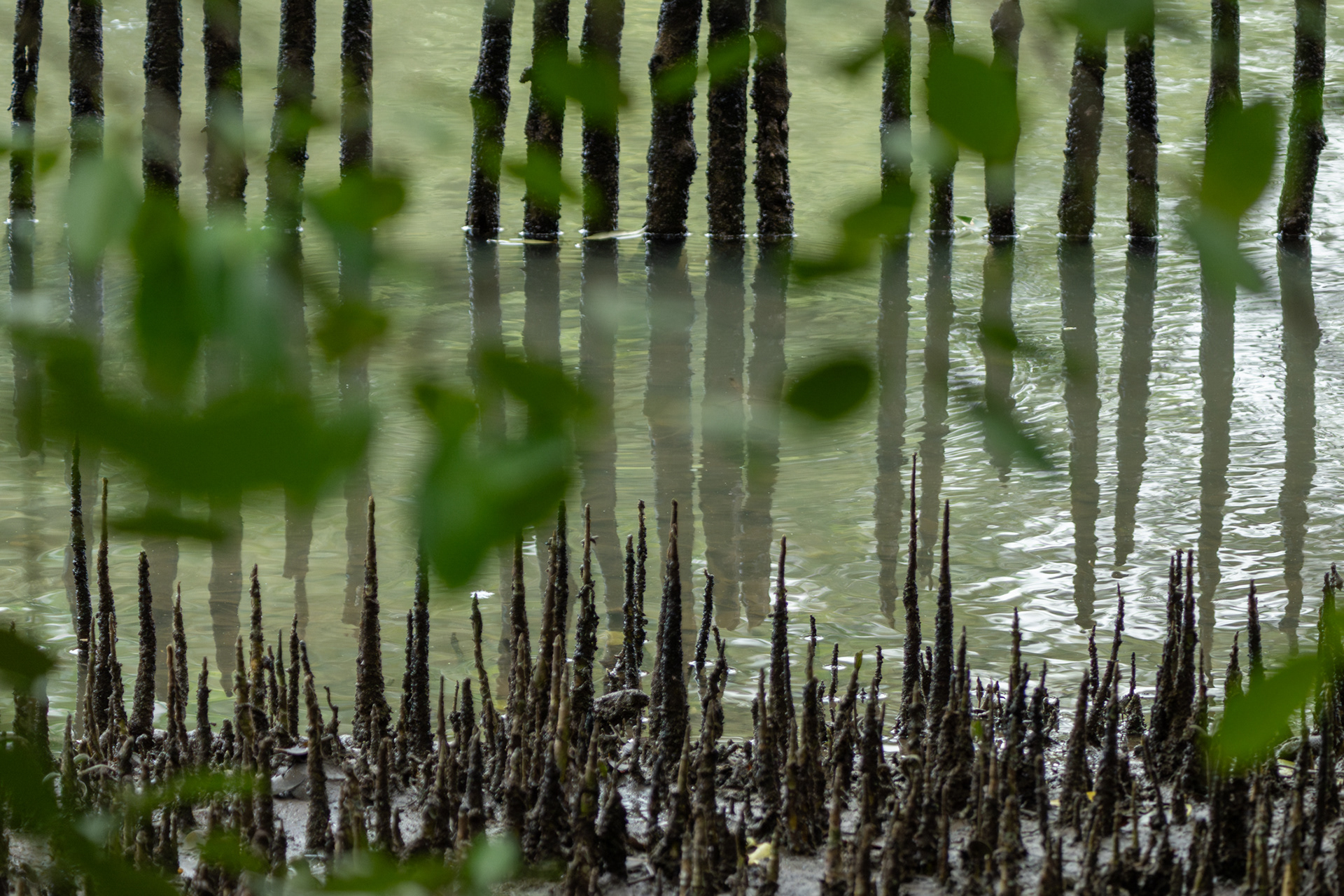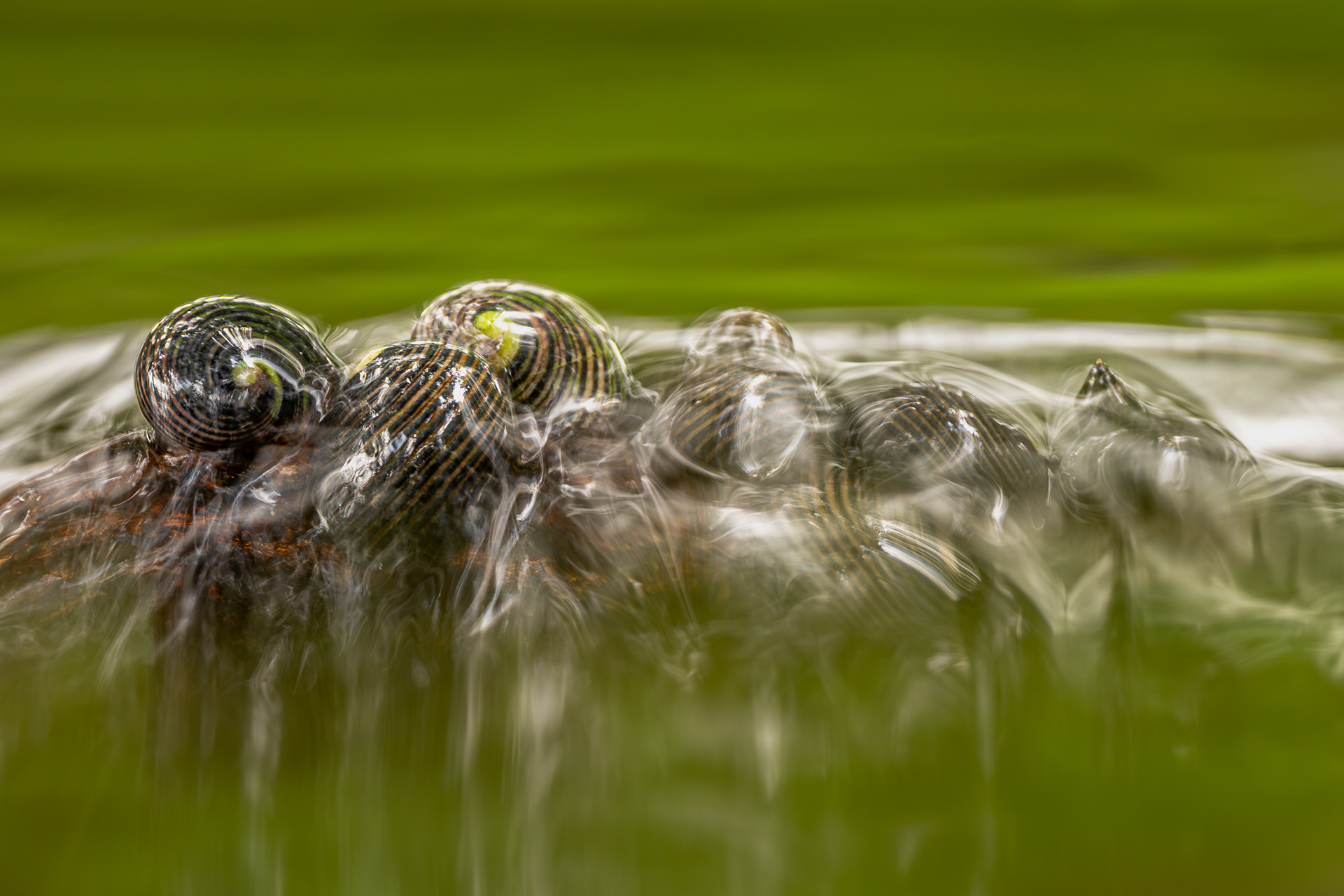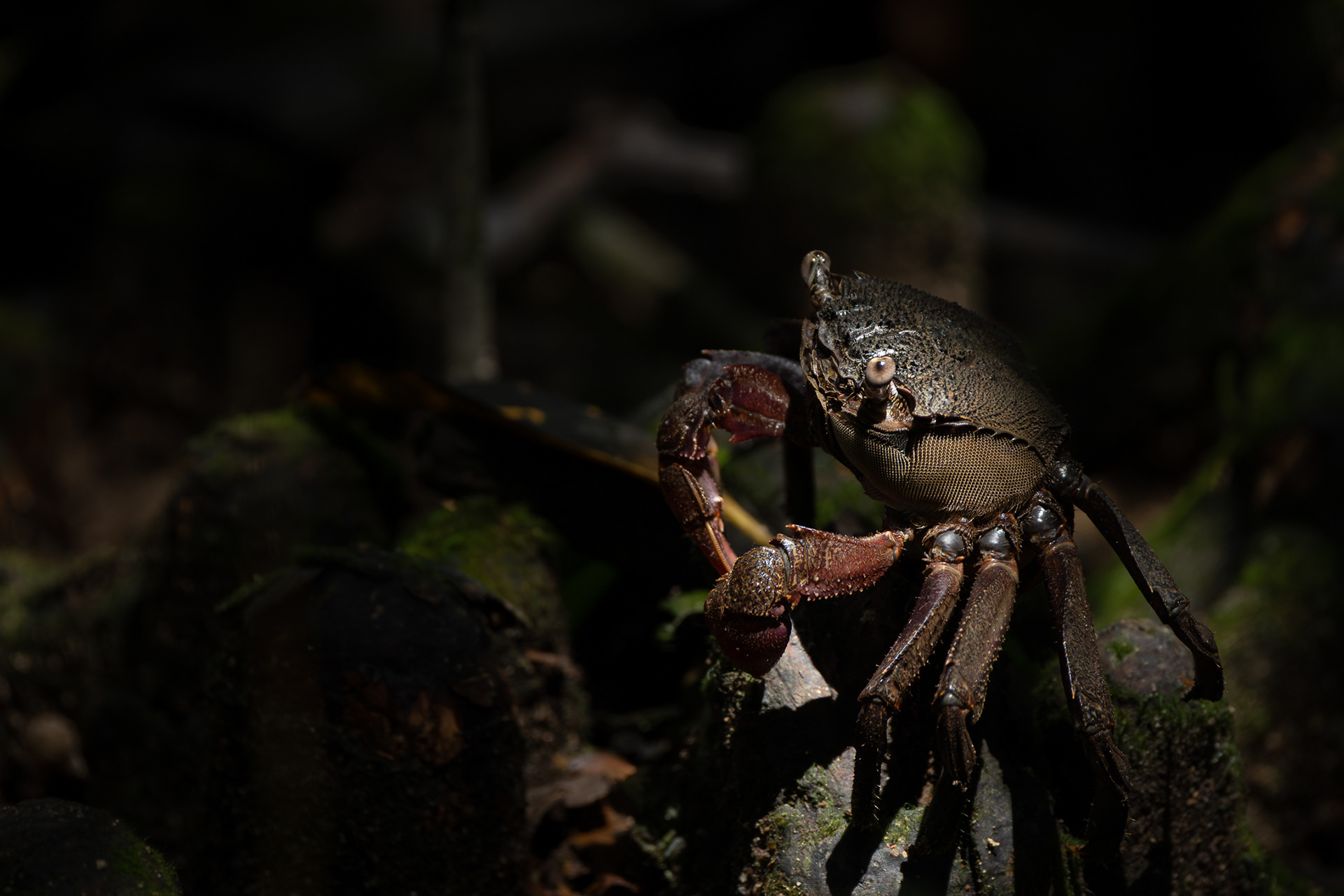




Photo 1: Mudskipper’s Companions
While walking through Singapore's Sungei Buloh Wetland Reserve, I ventured along the Mangrove Boardwalk in search of one of the most fascinating creatures in the area: the mudskipper. Known for their unique ability to thrive both in water and on land, mudskippers are amphibious fish that are often overlooked due to their excellent camouflage. As I walked slowly, keeping an eye on the muddy ground and shallow pools, I was eager to spot one of these remarkable creatures.
Mudskippers are fish, but unlike most, they can breathe through their skin, allowing them to spend much of their time on land as long as their skin remains moist. To stay wet, they frequently roll back into the water. Their unique ability to “skip” across mudflats using their pectoral fins helps them travel between pools and mudbanks in search of food and shelter, making them perfectly adapted to life in mangrove ecosystems.
The Sungei Buloh Wetland Reserve provides an ideal habitat for mudskippers with its rich, mud-filled environment that also supports crabs, birds, and small reptiles. From the boardwalk, I observed these creatures in their natural environment without disturbing them, a rare and fascinating experience.
Mudskippers play a crucial role in their ecosystem by aerating the soil as they move, benefiting plant growth and the health of the mangroves. Their presence underscores the importance of protecting wetland habitats like Sungei Buloh, which support biodiversity, aid in flood control, and store carbon. Observing these remarkable fish highlights the need to preserve such environments for future generations.
While observing the mudskipper, I noticed several mosquitoes perched on its skin. These mosquitoes were feeding on the moisture that coats the mudskipper’s body, a common behavior in wetland environments where the air is humid. This interaction is part of the complex food web of the mangrove ecosystem. While the mudskipper itself isn’t harmed by the mosquitoes, the insects serve as a food source for other creatures in the area, such as birds and small amphibians. The mangrove, with its rich biodiversity, supports these intricate relationships, where even the smallest organisms contribute to the survival of others.
Photo 2: Nature’s Snorkels
I took this photo in Singapore’s Sungei Buloh Wetland Reserve, capturing the fascinating aerial roots of mangroves that rise from the muddy ground and water. These roots, known as pneumatophores, allow mangroves to breathe in oxygen-poor, waterlogged soils. Framed by blurred leaves in the foreground, the intricate patterns of the roots and their reflections in the still water highlight the delicate and essential functions of mangrove ecosystems.
Pneumatophores are a remarkable adaptation that ensures mangroves can survive and thrive in challenging environments. These specialized roots function as snorkels, drawing in oxygen directly from the air through small pores known as lenticels. This is crucial in waterlogged soils where oxygen availability is extremely low, enabling the mangroves to maintain their metabolic processes and continue growing.
The importance of these roots extends far beyond the survival of the mangroves themselves. Pneumatophores play a vital role in stabilizing the muddy substrate of coastal wetlands, reducing erosion and protecting shorelines from storms and tidal surges. Their structure also slows down water flow, encouraging sediment deposition, which helps maintain the integrity of the habitat.
Moreover, pneumatophores provide microhabitats for a variety of organisms, including crabs, mollusks, and other small marine creatures, which rely on the roots for shelter and feeding. These organisms form the base of a food chain that supports larger wildlife, making mangroves a critical component of coastal ecosystems. The roots also act as natural filters, trapping sediments and pollutants, improving water quality, and ensuring a healthier environment for aquatic life.
Photo 3: Reflections of New Life
I took this photo in Singapore’s Sungei Buloh Wetland Reserve, showing young mangrove saplings growing in shallow water. The reflection of the plants on the water’s surface creates a calming and symmetrical visual effect, characteristic of wetland environments like Sungei Buloh. These mangrove plants play a crucial role in the ecosystem, protecting shorelines, providing habitats for wildlife, and helping with carbon storage. I found it so beautiful to witness the emergence of these new, young mangrove saplings, symbolizing regeneration and hope for the future. The photograph beautifully captures the tranquil and vital nature of this ecosystem.
Sungei Buloh Wetland Reserve, located in the northwest of Singapore, spans 202 hectares and is a critical sanctuary for biodiversity. It was designated as Singapore’s first ASEAN Heritage Park in 2003, recognizing its importance in conservation and its role in preserving fragile ecosystems. The reserve features various habitats, including mangroves, mudflats, freshwater ponds, and secondary forests, supporting a wide array of plant and animal species.
Mangroves, such as those featured in this photo, are one of the most vital ecosystems within the reserve. They act as natural buffers against coastal erosion, stabilize sediments, and serve as nurseries for fish, crustaceans, and other marine species. Mangroves also play a significant role in mitigating climate change by storing large amounts of carbon in their biomass and sediments.
Photo 7: Sunlit Climber
While walking through Singapore’s Sungei Buloh Wetland Reserve, I hoped to encounter a tree-climbing crab. As I moved slowly and scanned my surroundings, I suddenly spotted one, perfectly illuminated by the sun. A beam of light shone down, highlighting the small crab.
These fascinating creatures, often no bigger than a few centimeters, are known for their unique behavior and ecological importance. Tree-climbing crabs are primarily leaf-eaters, and they are expert burrowers, digging holes at the base of mangrove trees or in the mounds created by Mud Lobsters. Their burrows help aerate the soil and contribute to the stability of the mangrove ecosystem.
At high tide, these crabs are frequently seen climbing tree trunks just above the waterline, using their strong pincers to cling to the bark. This behavior is a clever adaptation to avoid predators in the mudflats and also helps them stay above the water, where they can find food more easily. Their ability to scale trees allows them to access a variety of food sources, including leaves and other organic material that fall from the canopy.
Ecologically, tree-climbing crabs play a vital role in maintaining the health of mangrove forests. By consuming decaying plant matter, they help in the decomposition process, recycling nutrients back into the soil and supporting the mangrove’s complex food web. Their burrowing activities also prevent erosion by stabilizing the roots of mangrove trees, contributing to the resilience of these vital coastal ecosystems.
